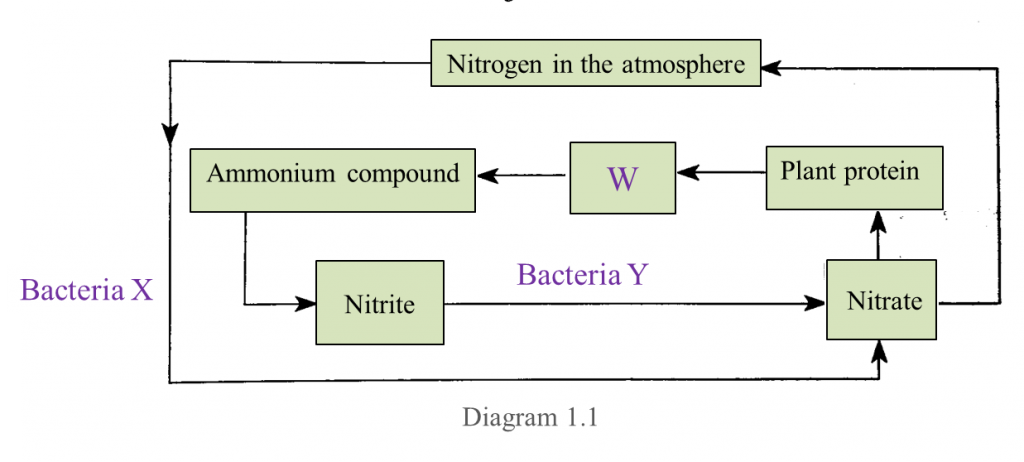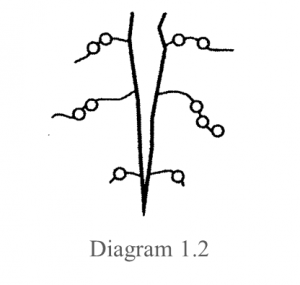Question 1:
Diagram 1 shows part of nitrogen cycle.

(a) What is represented by W? [1 mark]
(b) Name bacteria X and bacteria Y. [2 marks]
(c) State one importance of the nitrogen cycle in Diagram 1.1. [1 mark]
(d) Bacteria X can be found in the root nodules of a plant as shown in Diagram 1.2.[1 mark]

Name the type of plant shown in Diagram 1.2.
(e) The nitrogen cycle consists of several processes.
In Table below, mark (\/) the process involved in the nitrogen cycle. [1 mark]

Answer:
(a) Animal proteins
(b)
X: Nitrogen-fixing bacteria
Y: Nitrifying bacteria
(c)
1. Ensures that nitrogen and compounds of nitrogen are always present around us.
2. Maintains relatively steady levels of nitrogen and compounds of nitrogen around us.
(any one)
(d) Leguminous plant, pea plant, beans (any one)
(e)

Diagram 1 shows part of nitrogen cycle.

(a) What is represented by W? [1 mark]
(b) Name bacteria X and bacteria Y. [2 marks]
(c) State one importance of the nitrogen cycle in Diagram 1.1. [1 mark]
(d) Bacteria X can be found in the root nodules of a plant as shown in Diagram 1.2.[1 mark]

Name the type of plant shown in Diagram 1.2.
(e) The nitrogen cycle consists of several processes.
In Table below, mark (\/) the process involved in the nitrogen cycle. [1 mark]

Answer:
(a) Animal proteins
(b)
X: Nitrogen-fixing bacteria
Y: Nitrifying bacteria
(c)
1. Ensures that nitrogen and compounds of nitrogen are always present around us.
2. Maintains relatively steady levels of nitrogen and compounds of nitrogen around us.
(any one)
(d) Leguminous plant, pea plant, beans (any one)
(e)
